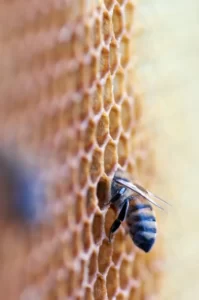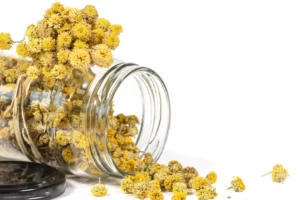Table of Contents
Manuka honey is known for its antibacterial properties, but quantifying its effectiveness can be challenging. In this study, researchers aimed to develop a model that could accurately measure the antibacterial activity of different honeys, particularly manuka honey. They also wanted to explore the synergistic effects of other compounds found in honey that may enhance its antibacterial properties.
Antibacterial Activity of Different Honeys
The researchers developed an assay to measure the antibacterial activity of different honeys. They used Bacillus subtilis, a bacterial strain that lacks the ability to detoxify methylglyoxal (MGO), a compound responsible for the antibacterial properties of manuka honey. By measuring the growth curves of B. subtilis in the presence of different honeys, they were able to determine the strength of the antibacterial effect.
They found that the antibacterial activity of honey was dependent on its MGO content. Honeys with higher MGO contents resulted in longer lag phases before the bacteria started to grow. However, the antibacterial effect was only bacteriostatic, not bactericidal, likely due to the degradation of MGO during the assay. B. subtilis may degrade MGO through various pathways, which could explain why the bacteria eventually started growing even in the presence of honey.
Evaluating the Antibacterial Effect of MGO
To evaluate the specific antibacterial effect of MGO, the researchers compared the growth curves of B. subtilis in the presence of different honeys, including artificial honey, cornflower honey, and manuka honeys labeled MGO250+ and MGO400+. They also tested the effect of hydrogen peroxide, another antibacterial compound found in honey, by adding it to artificial honey in honey-relevant concentrations.
They found that cornflower honey, which has a high glucose oxidase activity, showed a slight inhibiting effect compared to artificial honey. However, the addition of hydrogen peroxide did not significantly delay the growth of B. subtilis, indicating that it played a minor role in the antibacterial effect of honey. On the other hand, manuka honey MGO250+ showed a significant growth delay, suggesting that MGO was the main inhibiting compound.
Synergistic Effects of Other Compounds in Manuka Honey
The researchers wanted to explore whether other compounds in manuka honey could enhance its antibacterial effect. They tested dihydroxyacetone (DHA), the precursor substance of MGO, isolated manuka honey protein, gallic acid, 3-phenyllactic acid (3-PLA), and 3-desoxyglucosone (3-DG) as potential synergists.
They found that only 3-PLA and gallic acid showed synergistic effects with MGO. The addition of 3-PLA to artificial honeys with high MGO concentrations increased the growth delay of B. subtilis, indicating an enhanced antibacterial effect. Similarly, gallic acid enhanced the antibacterial effect of MGO in artificial honeys.
To verify these synergistic effects, the researchers compared the antibacterial activities of a manuka honey naturally containing MGO and 3-PLA, an MGO-spiked artificial honey with added 3-PLA, and another MGO-spiked artificial honey without 3-PLA. They found that the presence of 3-PLA increased the growth delay caused by MGO, but it was not enough to reach the antibacterial level of the commercial manuka honey sample. This suggests that other compounds in manuka honey, such as polyphenols, may also enhance its antibacterial effect.
Conclusion
In conclusion, this study developed a model to quantify the antibacterial activity of different honeys, particularly manuka honey. The strength of the antibacterial effect was found to be dependent on the MGO content of the honey. Additionally, synergistic effects of other compounds, such as 3-PLA and gallic acid, were observed, which enhanced the antibacterial effect of MGO. Further research is needed to fully understand the specific mechanisms and contributions of these compounds to the antibacterial properties of manuka honey.
Manuka honey is a powerful antibacterial agent, and its effectiveness can be measured and compared using the developed model. Understanding the factors that contribute to its antibacterial activity can help in the development of new treatments and therapies utilizing manuka honey.



